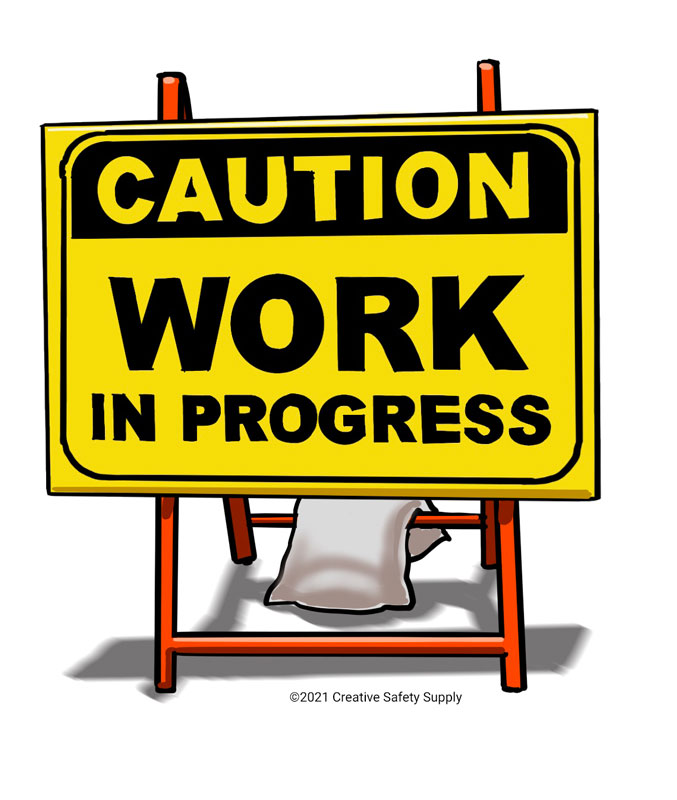
WIP stands for Work In Progress. It is a commonly used acronym in manufacturing, project management, as well as a wide range of other industries. In simple terms, it simply refers to any task or project that is currently being worked on. It can also be referencing an area where work is actively being done, such as on a construction site. Understanding its meaning, and how it is being used in a given situation, will help employees as well as others in the area to be able to respond appropriately.
WIP in Production
When manufacturing a product, the product will be seen as a work in progress from the moment it starts until it has been completed. During this time the product isn’t generating revenue, so it is important to have it progress as efficiently as possible. Once the product is done, it can be sold to customers to generate revenue for the company. Of course, it is important not to rush something through production just to get it finished as this can lead to defects and other forms of waste.
Gathering information about a product that is moving through the production line can help to maximize efficiency. By spotting potential delays or other forms of waste that are present while the product is a WIP will allow changes and improvements to be made. These can then be implemented throughout the production line to help improve efficiency.
Alerting People to WIP
When using WIP to reference active work that is being performed, it is often necessary to put up safety signs. These signs will alert those in the area to the fact that work is being done and that they need to be careful. In some situations, adding signs that tell employees what types of personal protective equipment they should be used in a WIP area will also be beneficial.
Additional WIP facts:
- Work in progress (WIP) is a part of a company’s product inventory. It consists of products that the company has partially completed. WIP appears on the balance sheet and accounts for the cost of the raw materials, labor, and overhead that have gone into getting the product to where it is in the chain of production. Source: https://www.investopedia.com/terms/w/workinprogress.asp
- WIP is an essential part of construction accounting. It calculates the progress of all ongoing work, allowing you to see what’s been done and what’s left to do—helping you manage budgets effectively. This information can then be used to generate reports and track project development using “percentage complete” figures. Source: https://insights.ieci.org/the-complete-guide-to-work-in-progress-wip/
- WIP allows you to see whether a project has been over or underbilled. Overbilling happens when you’ve billed for more than the work completed. While this can positively impact cash flow, it could also mean that the work is being completed slower than expected, rather than just being billed in advance. Underbilling occurs when contractors bill for less money than what was earned for the work completed to date. This can be problematic and lead to negative cash flow and can leave you in charge of financing this part of the project. Source: https://insights.ieci.org/the-complete-guide-to-work-in-progress-wip/
- Reducing WIP is one of the most important elements in attaining lean manufacturing. Lean manufacturing is a production philosophy that aims to eliminate waste and inefficiency in the manufacturing process. By minimizing WIP, lean manufacturing can reduce inventory costs, improve quality, increase customer satisfaction, and enhance profitability. Source: https://www.deskera.com/blog/work-in-progress-wip/
- WIP can be calculated using different methods, such as the cost-to-cost method, the efforts-expended method, the units-of-delivery method, and the units-of-production method. Each method has its own advantages and disadvantages, depending on the nature of the project and the availability of data. Source: https://learn.robinhood.com/articles/5FTBRwRipXxW6UidGgR1if/what-is-a-work-in-progress-wip/
Similar Questions
- What are Lean terms?
- Are people or processes more important in Lean manufacturing?
- What is a GANTT chart?
- What are the 7 (or 8) wastes of Lean manufacturing?
- Where do I start with Lean manufacturing?
- What is 3M in manufacturing?
- What is lead time?
- What is PMBOK?
- What is Lean construction?

